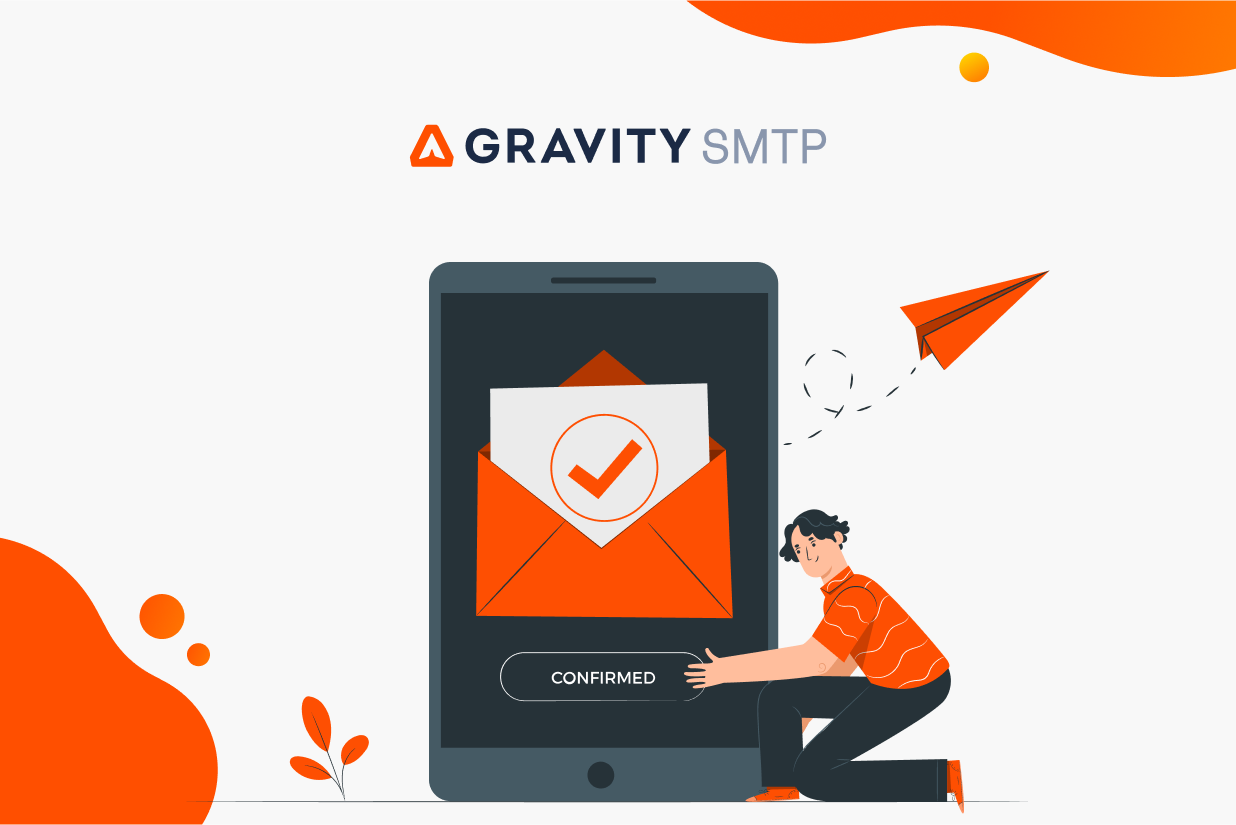The Importance of Transactional Emails and High Deliverability

In today’s algorithmically driven social media feed, email communication plays a crucial role in engaging with customers and maintaining smooth business operations.
Transactional emails, in particular, are essential for delivering important information and updates to your audience.
In this blog post, we’ll explore the significance of transactional emails, the importance of high deliverability rates, and how Gravity Forms’ latest product, Gravity SMTP, can help you achieve optimal results. These emails are critical if you’re powering your membership or donation business with Gravity Forms.
It’s not only critical that customers get the notification emails you configured, but also the receipts, password reset and donation confirmations. Watch the video or read on for more information…
What are Transactional Emails?
Transactional emails are automated messages triggered by specific actions or events within your WordPress website.
These emails include order confirmations, account notifications, password resets, and other critical information that users expect to receive promptly. Unlike marketing emails, which are promotional in nature, transactional emails are focused on delivering essential information related to a user’s interaction with your business.
Since Gravity Forms is often used at the heart of bespoke apps built on top of WordPress, Gravity SMTP is a natural fit to ensure your customers and users receive the emails they expect. It’s critical that we don’t rely on core WordPress to send the email or from the web host that shares resources across multiple customers.
The Importance of High Deliverability:
To ensure that your transactional emails reach their intended recipients, maintaining a high deliverability rate is crucial.
Deliverability refers to the ability of your emails to land in your subscribers’ inboxes rather than being flagged as spam or bouncing back. Poor deliverability can lead to missed opportunities, frustrated customers, and potential damage to your brand’s reputation.
That’s where 3rd party Email Sending Platforms (ESPs) come into play. As I mentioned earlier, you don’t want to rely on your WordPress website to send the email as email servers are more likely to flag them as spam.
It comes down to being a trusted source, and that’s what ESPs are providing us. Aside from being a dedicated source of trusted emails, platforms like SendGrid provide more stats and analytics around your deliverability.
For example, if a customer reported that they weren’t receiving their receipts or notifications from your membership site, you could easily search your ESPs log files and see where things went wrong – even see if your customers opened the emails!
Separating Transactional Emails from Marketing Lists
One common mistake businesses make is sending transactional emails from the same email address or server as their marketing campaigns.
This practice can have detrimental effects on deliverability. Email service providers and spam filters often scrutinize the reputation and engagement metrics of an email sender. If your marketing emails have low engagement rates or high spam complaints, it can negatively impact the deliverability of your transactional emails.
And let’s be honest, as marketers, we want our customers or future customers to read every email we send them. New features, offers, and other industry news we think are important to the lifecycle of our product.
Then reality sets in. We realize that maybe after a year of being on our list, the customer doesn’t want to be bothered anymore. It doesn’t mean they dislike our product, but they just want to reclaim some headspace in their inbox.
We don’t want them unsubscribing or blocking those important transactional emails, however.
To mitigate this risk, it’s essential to separate your transactional emails from your marketing lists. By using a dedicated email infrastructure for transactional messages, you can ensure that the reputation of your transactional emails remains intact, regardless of the performance of your marketing campaigns.
Introducing Gravity SMTP
Gravity SMTP is a powerful plugin that simplifies the process of connecting your forms to third-party email sending providers.
With Gravity SMTP, you can easily route your transactional emails through reliable and reputable email services, ensuring high deliverability and a positive user experience.
Key features of Gravity SMTP include:
- Integration with popular email sending providers like SendGrid, Mailgun, Postmark and Brevo.
- Easy setup and configuration, allowing you to quickly connect your forms to your chosen email provider.
- Detailed email logs and reporting, giving you insights into the performance of your transactional emails.
By leveraging Gravity SMTP, you can streamline your transactional email process, improve deliverability, and provide a seamless experience for your users. Manage and search your transactional emails right from within the WordPress dashboard!
We have lots of great ideas planned for the future of Gravity SMTP alongside more integrations with the ESPs you already use.
Conclusion
Transactional emails play a vital role in fostering trust and engagement with your customers.
By prioritizing high deliverability and separating transactional emails from marketing lists, you can ensure that your important messages reach their intended recipients.
Gravity SMTP offers a convenient solution for businesses using Gravity Forms, allowing them to easily integrate with trusted email sending providers and optimize their transactional email strategy. If you’re building websites for customers, this is a great way to provide that extra value to your client, which separates you from other agencies or consultants.
Gravity SMTP is currently available for free with a Gravity Forms Elite license. If you have an active Elite license, simply head on over to your Gravity Forms Account section to download Gravity SMTP today!
